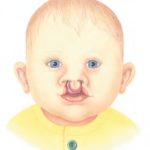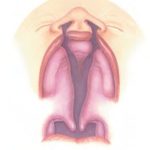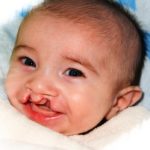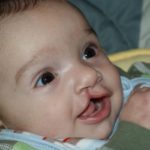
What is Cleft Lip & Palate?
Around one in 700 babies are born with a cleft around the world. That's over 1,200 babies born with a cleft each year in the UK!

In early pregnancy, different parts of a baby’s face develop separately and then join together. If some parts do not join completely, the baby is born with a cleft.
A cleft lip and/or palate is the most common craniofacial abnormality (a problem to do with the skull and face) which babies can be born with.
Just had a diagnosis? Get your questions answered.
Cleft Lip
A cleft lip can range from a little notch in the coloured part of the lip to a complete separation of the upper lip which can extend up and into the nose. This can affect one side of the mouth (unilateral) or both sides (bilateral), and can be complete (meaning the cleft goes up into the nose) or incomplete.
A cleft lip can also affect the gum where the teeth come through. Again, this can range from a small notch to a complete separation of the gum into two parts.
Cleft Palate
A cleft palate is a gap in the roof of the mouth. The back of the palate (towards the throat) is called the soft palate, and the front (towards the lips) is called the hard palate. A cleft can affect the soft palate or both the soft and hard palate.
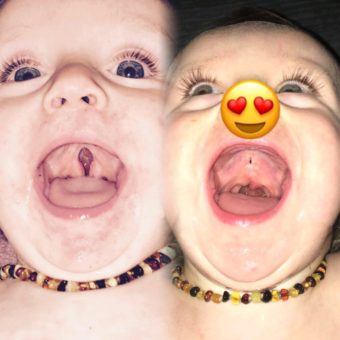
Sometimes a baby with a cleft palate may have a small lower jaw (mandible) and a few babies with this combination may have difficulties with breathing. This condition may be identified as Pierre Robin Sequence.
You can have a cleft lip, a cleft palate, or a cleft lip and palate. A cleft palate by itself is often called an isolated cleft palate.
VIDEO: Easing the First Few Hours – Chapter Two – Types of Cleft (7:41)
What causes cleft lip and palate?
If you have a child with a cleft, it is very unlikely to be because of something you did or did not do.
No one knows exactly what causes a cleft. Research tells us it’s often caused by a combination of different genetic and environmental factors.
Genetics is all about things inherited from family members, like eye and hair colour. With a cleft, sometimes there is a clear family link, other times it just happens as a ‘one off’.
Environmental factors mean things that happen just before or during pregnancy, like taking a certain medicine or how the baby starts growing in the womb.
Most of the time, a cleft is caused by genetic and environmental factors coming together in a way that can’t be predicted or prevented.
Sometimes a cleft is caused by part of a ‘syndrome’, which is when lots of different symptoms happen together.
If you want to find out more about what caused your or your child’s cleft, the Clinical Geneticist in your Cleft Team might be able to help you.
Find out more about the causes of cleft lip and palate
How many people have a cleft?
Around one in 700 babies are born with a cleft around the world. That’s around 1,200 babies born with a cleft each year in the UK!
Of these, around 45% will have a cleft palate on its own, 24% will have a cleft lip on its own, and 31% will have a cleft lip and palate.
Bilateral cleft lip and palate (where the cleft is on both sides of the lip) is the least common type, at just 9%.
How is it treated?
The NHS Cleft Teams in the UK are made up of a number of specialists from surgeons to speech therapists dedicated to providing the best possible care for people born with a cleft, from infancy through to adulthood.
Surgery is needed to close the gap left by the cleft. This will usually happen when the child is under a year old.
Every cleft is unique, just like every child, so the exact treatment pathway will vary. It may include further surgery to help with issues such as speech and growth of adult teeth. It may also include speech therapy, help with hearing, orthodontic work, etc.
The information on this site is intended to be a general guide only, and should never replace the advice you will receive from your local Cleft Team.
For more information, see our overview of treatment, or go straight to our Treatment Timeline

